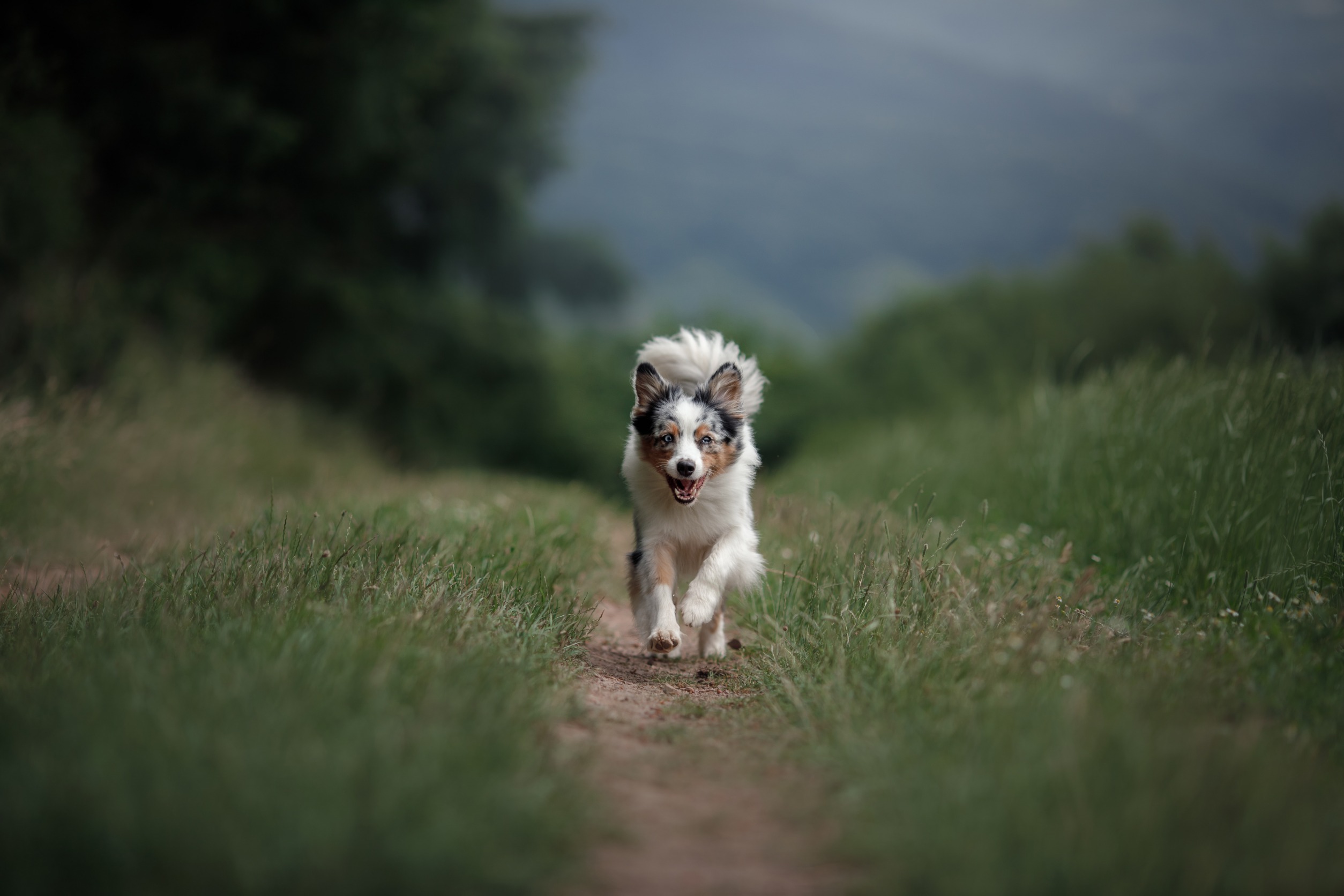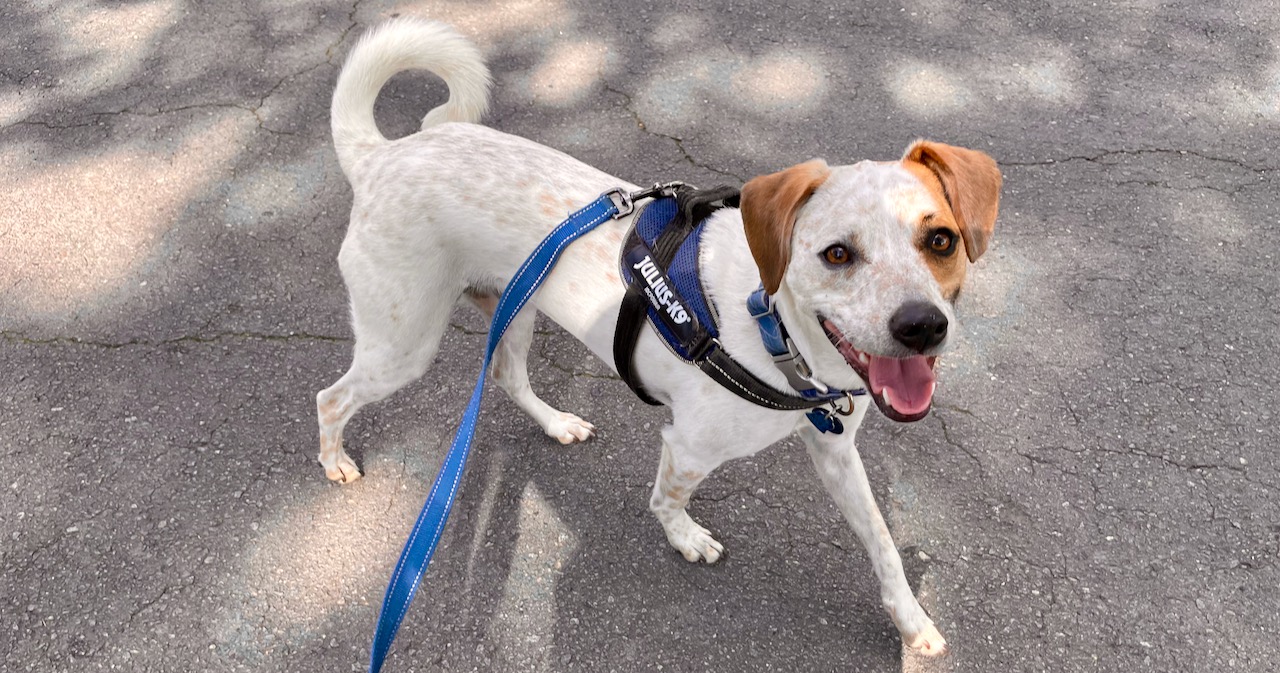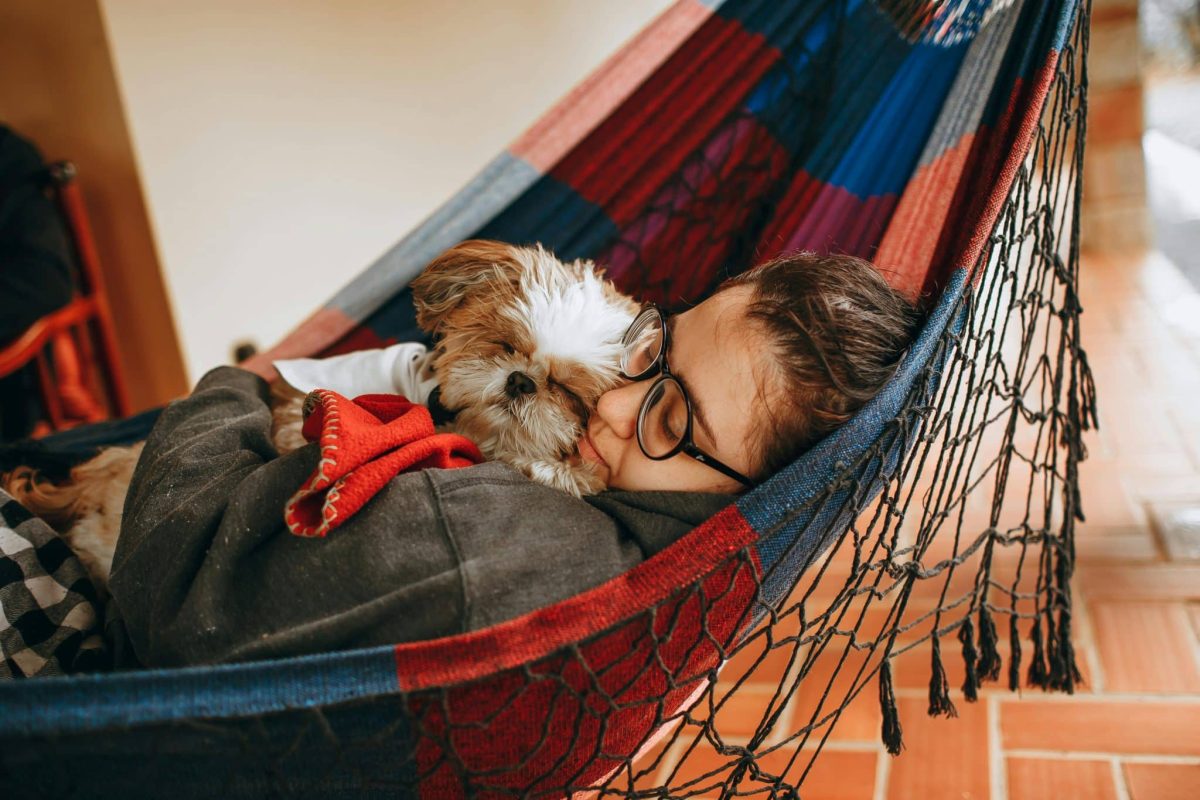Nothing scares a dog owner more than the possibility of their pup running away. It’s one of the most heartbreaking things that they can experience. So looking at what causes them to adventure outside their homes is vital in preventing it.
As a result, I researched the topic and found the most common reasons. I’ll dive into details about each situation while offering tips to help you avoid it entirely. You’ll soon have everything to ensure this nightmare never happens with your pup.
7 Most Common Reasons Why Dogs Run Away
In most instances, a dog will run away for one of these reasons: looking for a mate, feeling curious, scared, bored, anxious, hunting prey, or being unfamiliar with their surroundings. Let’s look at them individually to ensure it doesn’t happen with your pup.
Related: Best Dog GPS Trackers to Help You Find Your Lost Pup Fast
1. Looking for a Mate
Dogs who aren’t neutered or spayed will go to great lengths to find a mate. This situation becomes even more problematic when female canines in heat are nearby. Your unneutered males will often try hopping a small gate or sliding through a hole in the fence. If there’s an escape route, he’ll put in a massive effort to find it.
Owners with a female dog in heat also will have an issue containing them. These dogs often try to escape and find a suitable male companion. In other words, nature will try to find a way to produce another litter of puppies.
So the obvious move would be getting them spayed or neutered (more on this later). Of course, it’s not an end-all solution to your issue as they may still decide to wander. But it can have an impact on their motivation to escape.
2. Feeling Curious
Curiosity can get the best of any animal. It’s no different for a canine who’s spending every day roaming the same areas inside and outside their homes. I find it hard to blame them if they get bored and wonder what’s beyond the fence.
Honestly, dogs have a built-in nature to explore and roam. They want to be active and wander around unexplored areas, causing them to escape their backyards occasionally. That’s why having a broken fence or small gate isn’t a wise move when having any canine.
These situations only make the curiosity increase to an inciting level. It’s just a matter of time before they jump over it or find an opening. Due to this, I always advise owners to watch their dogs when letting them in the backyard.
3. Hunting Prey
Prey hunting is a significant problem when a dog runs away from home. In other words, dogs often get intrigued by smaller animals like a bunny or squirrel. It makes them want to chase this prey animal outside a secured yard.
Of course, this habit is more common among certain dogs than others. Prey-driven or sporting breeds (more on this later) like Huskies, Sighthounds or Pointers are naturally susceptible to this behavior. It’s in their DNA to chase down small prey animals.
Anyone with these breeds will have to be extra cautious. If they notice a prey animal, these dogs will do whatever possible to chase it down and catch it. So do all the furry woodland creatures a favor and watch your dog; don’t let their hunting instincts get them into trouble.

4. Scared
Fear has a way of making dogs do irregular things. So it makes sense that being scared is a common reason dogs run away from home. I’d imagine a loud fireworks display or thunderstorm could cause this reaction.
For instance, they hear the loud noise and panic sets into their mind. They respond by running around without an idea of what’s happening to escape the commotion and the confines of your home.
Given this information, working through or managing fears should be part of your dog’s training. I’ve had to do it with my Beagle, who is terrified of thunderstorms. I managed to find a way to calm him down using blankets and thunder shirts. You can also try calming supplements, like Vet Natural’s Hemp and Harmony.
Hemp & Harmony – Vet Naturals
Hemp & Harmony chicken flavored soft chews are created with the best natural and organic ingredients to help us provide a safe, easy and effective way to help calm down our dogs. Each chew helps with both behavior and situational anxiety prevention, loud disruptive behavior and nervousness.
5. Boredom
Boredom is a curse that doesn’t only cause humans to make bad decisions. It can have quite an impact on your dog’s decision-making, especially when left alone outside. They take this opportunity to explore what lies beyond their same old yard.
I find it hard to blame them since doing the same thing gets tiring. But owners can avoid their dogs feeling any sense of boredom easily. It’s all about giving them more attention and keeping things fresh ( see our prevention tips section for ideas).
6. Unfamiliar Surroundings
Owners always underestimate the impact an unfamiliar area can have on their dogs. But it can make them act differently than what occurs in your home. So it’s not surprising that canines are commonly known to run away when encouraging new areas.
For instance, the new surroundings are filled with new smells and distractions. It can get your dog overly excited and hyperactive. They’ll want to explore everything this place offers, which causes them to get lost.
7. Separation Anxiety
Separation anxiety is an often underestimated condition that can affect our canines. It comes from whenever a dog feels over-dependent on their human. In other words, they don’t know how to behave if left alone and act out in bizarre ways.
It could cause them to chew furniture, pee indoors, destroy items, or escape. Honestly, these symptoms are just ways of them trying to deal with these new anxious feelings. I’ve had to deal with this condition as my Pitbull developed it.
Thankfully, managing her separation anxiety wasn’t overly tricky. All I had to do was put her in a locked crate whenever I was away as she felt comfortable in one. Meanwhile, I set up training sessions with a behaviorist to help her overcome the issue entirely.
5 Tips to Prevent Dogs From Running Away
Several actions can help mitigate the chances of your dog running away from home. In this section, I’ll discuss a few to help you avoid this situation entirely. You can then incorporate them and ensure your furry best friend remains happy at home!
1. Teach and Practice Basic Commands
Teaching a dog basic commands is an excellent way to prevent unwanted behaviors. It’s no different with dogs attempting to go somewhere they aren’t allowed. For instance, a simple “come” or “stay” could prevent your pooch from chasing a rabbit into the neighbor’s yard.
Learning “sit” or “stop” should also be on the objective list. Anything capable of preventing a dog from running outside its allowed territory. If done correctly, there won’t be any situation that you can’t manage.
But learning these commands is only half the battle. It’s essential to keep practicing them to promote better recall and listening skills. Over time, these basic teachings will become second nature to your dog and be immensely helpful for you.
2. Get Your Dog Spayed or Neutered
As I mentioned earlier, getting your dog spayed or neutered should be on your to-do list. This procedure will help curb its instinct to reproduce, which is a primary reason behind a dog’s willingness to run away.
By keeping this instinct in check, your male or female dog won’t seek out a mate. They become much more docile and less likely to roam in unknown territories. So it’s just an easy way to help keep your dog at home.
The procedure itself isn’t an overly worrisome one, either. It’s better to get it done when the dogs are younger (after six months) as it gets riskier with age. Certain behaviors like a desire to roam can become embedded in older dogs, making the procedure less effective for our purposes.
I also must note that spayed and neutered dogs often are healthier. So it’s a good idea for various reasons and worth asking your vet about immediately.
3. Exercise, Exercise, and Exercise
Preventing roaming and boredom in dogs is all about providing stimulation. So get a handle on your dog’s exercise needs and meet them daily. If you do, they’re much less likely to stray or look for it elsewhere.
My favorite exercise activities are taking dogs on long walks or playing fetch in the backyard. Both provide endless amounts of physical and mental stimulation. Afterward, I never have to worry about my dogs feeling bored.
Some other exercise methods include hiking, biking, running, playing games like hide and seek, and teaching tricks. Any of these options should ensure your dog doesn’t become filled with pent-up energy.
4. Avoid Loud Noises and Other Triggers
Most dogs won’t be too fond of loud noises, so it makes sense to avoid them whenever possible. This avoidance should stop them from reacting irregularly when encountering. I mean, they can’t react and run away if there’s nothing to trigger the reaction.
But sadly, it’s not always possible to avoid loud noises like fireworks or thunderstorms. So it’s vital to have a plan for comforting any dog who gets startled by them. It could be wrapping them up in a blanket, petting them gently, CBD treats, or investing in a thunder shirt. It’s all about finding what works for your specific dog.
Of course, loud noises aren’t the only trigger for running away behaviors. Other canines and various prey animals can also trigger these reactions. So if your dog reacts poorly to other animals, avoid public trails and similar places.
You could also seek a professional to help them be better at socializing. It doesn’t always work with every dog, but I’ve seen it work wonders on some of them. I’ve found that it’s more likely to be effective with younger pups who aren’t too set in their ways.
5. Build or Upgrade Fences and Gates
Fences and gates are critical components of keeping your dog at home. Owners should do their best to keep these fixtures in top-tier shape. A dog can’t figure out a way around them if they’re well-designed and maintained.
If you don’t have them, building a fence/gate before getting a dog is a good idea. I’d even recommend them to parents who don’t intend to let their dogs in the backyard. You never know when your pup may sneak past and get outdoors.
After building these security measures, it becomes a matter of maintaining them. Check each part of it daily to see if any unprotected areas or damage has presented itself. Doing so ensures you can address it before your pupper becomes aware of the new opening to uncharted lands.
What Breeds Are More Prone to Run Away?
Certain breed groups have a higher likelihood of running away from their homes. Owners should be aware of these breeds to prepare if theirs is one of them. It’ll help ensure this nightmare situation never occurs in your family. So without further ado, here’s a quick look at the breed groups with a history of this behavior:
1. Herding Breeds
I can’t imagine anyone is too surprised herding breeds have a habit of running away. It comes from their high energy levels, which can be hard for owners to meet. So it often leads to them looking for other outlets to get exercise.
In response, these breeds resort to destructive behavior like digging under fences or breaking out of crates. It’s why anyone who has a herding breed dog needs to be overly careful about ensuring they get a ton of exercise.
Examples of herding breeds include German Shepherds, Border Collies, Australian Shepherds, and Old English Sheepdogs.
2. Flat-Faced Breeds (Brachycephalic Breeds)
Flat-faced breeds, also known as Brachycephalic breeds, are named for their short snout that’s caused by a genetic mutation. It affects their skull growth to a point where they end up with flattened faces and short muzzles.
In any case, these breeds have earned a reputation for running away from home. It comes from their stubborn personalities and strong/large builds. They also don’t respond well to boredom, causing them to break through fences or gates.
Some notable examples include Mastiffs, Bulldogs, Cane Corsos, and Boxers. Owners with these dogs need to have a plan in place for dealing with activity levels. If not, you may come home and find your back gate broken.
3. Sporting Breeds
The last group with a heightened chance of running away is sporting breeds. It makes sense, considering their massive exercise needs and stamina. After all, they’re always looking for a way to release any pent-up energy that may have built up throughout the day.
So if a small prey animal comes around the yard, these dogs will chase them. It could cause them to break the containment of their home’s fence or other security measure. It’s all a part of their instincts and genetic makeup. A few examples of hunting breeds include Labrador Retrievers, Bloodhounds, Scottish Terriers, and Golden Retrievers.
During my time as a dog owner, I’ve had several of these breeds. It became evident that keeping these instincts in check can be a full-time job. Therefore, potential owners need to prepare themselves with a detailed plan for meeting a hunting breed’s needs.
Conclusion
The reasons dogs run away from home rarely have anything to do with their owners. It’s usually about finding a mate, hunting prey, boredom, curiosity, fear, anxiety, or being in an unfamiliar area. So owners must do their best to mitigate these situations from occurring.
It could be teaching them basic commands, building better fences, getting them spayed/neutered, offering more exercise, or avoiding loud noises. Honestly, it’s all about doing your best to create a safe and happy home for your favorite pooch. If you do, the likelihood they will run away decreases significantly.
Let me know if you have more questions about this topic in our comment section. I’ll make sure to answer them as soon as possible. Thanks for reading!




